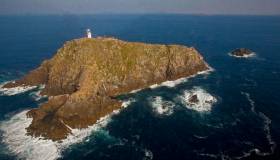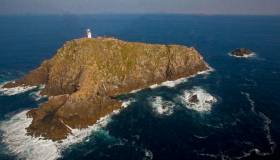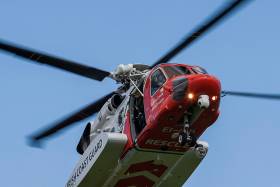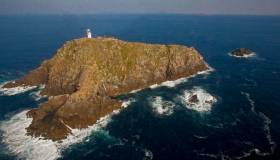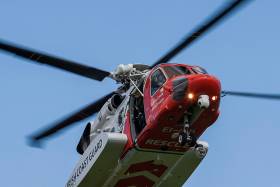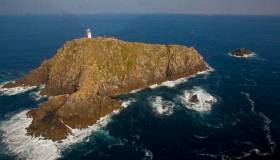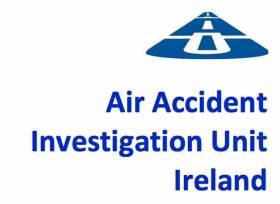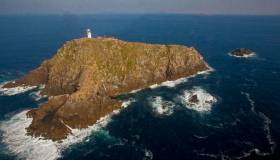Displaying items by tag: Rescue 116
#Rescue116 - A new report reveals that the absence of data on Black Rock from Rescue 116’s onboard warning system was flagged with the Irish Coast Guard’s helicopter operators years before the fatal crash earlier this year.
Captains Dara Fitzpatrick and Mark Duffy, along with winch operator Ciarán Smith and Paul Ormsby, died after their Sikorsky S-92 went down at the small Co Mayo island, west of Blacksod on the Mullet Peninsula, in the early hours of 14 March 2017.
Four months on and despite exhaustive searches of the area, the remains of Smith and Ormsby have not been found.
April's interim report into the tragedy suggested that the helicopter had been flying using a pre-programmed route that was missing specific data relating to Black Rock, while en route to a planned refuelling stop at Blacksod.
Now a report from RTÉ’s Prime Time says the issue of the missing data was raised four years ago with a senior manager at CHC Ireland, which won the 10-year, €500 million contract to operate Ireland’s helicopter SAR services in 2012.
The Irish fleet of long-range SAR helicopters was equipped with an Enhanced Ground Proximity Warning System, or EGPWS, in 2013.
That year, Sligo-based Irish Coast Guard pilots noted that Black Rock was missing from the EGPWS during routine test flights in the area.
However, Prime Time learned from a source that weeks after the incident, coastguard staff were told management were looking into whether that information had been passed on to those responsible for updating the system’s obstacle database.
That same database was found just days after the Black Rock accident to have incorrect information for Skellig Michael, listing it as just 56m rather than its actual 217m height, though this has since been corrected.
RTÉ News has more on the story HERE.
#Rescue116 - More than 100 divers have joined a major search since early this morning (Saturday 22 April) for Paul Ormsby and Ciaran Smith, the two Irish Coast Guard crew members still missing after the Rescue 116 tragedy over a month ago.
According to The Irish Times, an exclusion zone around the wreck site at Black Rock off Co Mayo has been lifted for the search, thought to be the largest ever co-ordinated dive in the history of the State.
Naval Service and Garda divers are joined by specialists in sub-sea search and recovery in combing the sea bed of at the western and south-western parts of the island, following the completion of a ‘360-degree’ terrain survey by the Army and Garda crime scene examiners.
The Irish Times has much more on the story HERE.
“We’re Gone”: Final Moments Of Rescue 116 Show Helicopter ‘Pitched Up Rapidly’ Before Crash
#Rescue116 - The interim report from the investigation into the Rescue 116 tragedy has found that the Irish Coast Guard helicopter “pitched up rapidly” in its final seconds before crashing off Co Mayo a month ago.
Data recovered from the Sikorsky S-92’s ‘black box’ paints a terrifying picture of the seconds before the coastguard helicopter was lost at Black Rock in the early hours of Tuesday 14 March, with one of the crew calling for evasive action as the island loomed dead ahead.
Moreover, details in the Air Accident Investigation Unit’s (AAIU) preliminary report suggest the aircraft was flying using a pre-programmed route that was missing specific data relating to Black Rock, a small island east of Blacksod on the Mullet Peninsula.
Recordings from the cockpit also reveal that neither the mission commander and pilot Capt Dara Fitzpatrick nor co-pilot Capt Mark Duffy, whose lives were lost in the incident, had recent familiarity with landing in the area.
The Dublin-based coastguard SAR helicopter had been dispatched late on Monday 13 March to provide top cover for an offshore medevac being attended by Sligo’s Rescue 118.
Contact was lost with Rescue 116 as it approached Blacksod for refuelling and a search began immediately, with wreckage soon spotted off the western end of Black Rock and Capt Fitzpatrick recovered from the water within hours of the crash, though she later died in hospital.
Capt Duffy’s remains were recovered from the cockpit on the sea bed more than a week later. The search continues for their crew mates, winch men Ciarán Smith and Paul Ormsby, though after a major sweep by more than 100 fishing vessels this last weekend, the operation is now being wound down.
Rescue 116’s dual flight data recorder and cockpit voice recorder was recovered from the sea bed on Friday 24 March. Examination of the hardware revealed water damage to its memory board, requiring delicate desoldering of its circuits to recover the data, a process that is ongoing at the AAIB laboratory in the UK.
Additional data recovered from the aircraft’s Health and Usage Monitoring System (HUMS) identified no diagnostic alerts regarding Rescue 116’s critical systems or components.
Position data from the HUMS card was used to generate a placemark for what appears to be the last recorded position of the aircraft, though in its final seconds it was “subjected to complicated flight dynamics and a progressive deterioration of structural and systems integrity”.
All available data adds up to the following picture of the situation inside Rescue 116 before its loss:
- The mission commander and pilot (Capt Dara Fitzpatrick) was seated right of the co-pilot (Capt Mark Duffy) in the cockpit.
- All crew communications were mission-focused with no outside distractions.
- The helicopter routed from Dublin towards Sligo, then adjusted heading based on fuel requirements to Blacksod Lighthouse before a planned routing to the SAR mission offshore.
- After a crew briefing prior to arrival at Blacksod, Capt Fitzpatrick remarked that it has been some time since she had landed at Blacksod; Capt Duffy later said he had also not been to the area recently.
- The cockpit voice recording contains no reference by the crew to the presence of a lighthouse or terrain at Black Rock.
- The recording also indicates that Capt Duffy was using the helicopter’s weather radar to identify terrain features.
- 26 seconds before impact, the radio altitude sensor gave an aural alert, which Capt Fitzpatrick explained as “just a small little island... that’s B L M O [referring to Black Rock] itself”. Data places the aircraft at this time near an outcrop of two rocks just over half a nautical mile west of Black Rock.
- 13 seconds before impact, one of the rear crew members identified an island “directly ahead of us now guys” and suggested the helicopter should “come right” by “20 degrees”.
- Data shows the heading change was made before the rear crewman added with urgency to “come right now come right COME RIGHT”. A second later, Capt Duffy said: “We’re gone.”
- Two seconds before initial impact, data shows the helicopter pitched nose up, then after impact climbed with large changes in pitch, roll and yaw.
The recorded data, while not definitive, indicates that the flight crew was using an operator-specific route guide — a review of which is now warranted, says the AAIU.
The report also includes a recommendation to review instructions for the use of locator beacons on the Mk 44 lifejackets used by the crew, two of whom remain missing four weeks after the incident.
The AAIU investigation continues, but the preliminary report is available in full as a PDF to download below.
Update 15 April 2017: This article was changed to correct a misattribution of the final quote by Capt Mark Duffy to his colleague Capt Dara Fitzpatrick. The original article also misstated the designation of the pilot (and mission commander) and co-pilot.
#Rescue116 - The Coast Guard Rescue Coordination Centre in Malin will tomorrow (Saturday 8 April) assist with managing the surface search for the two missing crewmen of Rescue 116 by a large number of fishing vessels that have offered their services.
No trace of Paul Ormsby or Ciarán Smith was found when the wreck of the Sikorsky S-92 helicopter was lifted from the sea bed off Black Rock in Co Mayo last weekend, as previously reported on Afloat.ie.
While underwater operations are ongoing, a fleet of fishing vessels from Killybegs this week pledged to sweep the Atlantic seaboard from first light tomorrow for any sign of the missing coastguard airmen, according to The Irish Times.
The South Donegal and North Mayo coast has been divided into a number of search areas, each under the direction of an RNLI or Irish Coast Guard asset. The Naval Service ship LÉ Ciara will be on scene ready to assist where required.
Meanwhile, the coastguard is requesting all mariners in the area to keep a good lookout for any debris in the course of their routine activities and to report any findings to the Malin Head Coast Guard Coordination Centre.
Coastguard officials expressed their ongoing appreciation to the many volunteers supporting the search, in particular coastguard members, lifeboat volunteers and Civil Defence, as well as local community support.
Update from the RNLI: Lifeboats from Ballyglass, Achill, Sligo, Bundoran and Arranmore, along with Killybegs and Killala Coast Guard, will be on scene for the day and will keep in communication with all vessels.
The RNLI wishes to join with the coastguard in stressing the importance of safety for every person taking part in the search. Each individual should be wearing a personal floatation device and have access to a working VHF for communications.
While engaged in the search, the RNLI lifeboats will remain on call and available for search and rescue operations. Should an RNLI lifeboat need to respond to an emergency elsewhere a designated deputy vessel will be appointed.
Commenting on the planned search, RNLI lifesaving manager Gareth Morrison said: “Since the loss of Rescue 116 our lifeboat crews from Ballyglass and Achill, later joined by Arranmore, Sligo and Bundoran have spent a huge number of hours out searching. This has been in conjunction with our colleagues in the Irish Coast Guard, Naval Service, Civil Defence and with local vessels.
“Most of our lifeboat crew are volunteers who have left families and jobs to engage in the search. I want to take this opportunity to thank all the RNLI lifeboat crews, station personnel and wider communities who have taken part.”
“With everyone involved in the search on Saturday staying vigilant and safe and following the directions from the on scene coordinators we will cover a huge area safely. We also ask that people continue to keep a lookout for any debris and report findings to the coastguard.”
Morrison concluded: “Our thoughts remain with the families and colleagues of the crew of Rescue 116.”
No Sign Of Missing Crewmen As Rescue 116 Wreck Lifted
#Rescue116 - No sign of missing Irish Coast Guard crew members Paul Ormsby and Ciarán Smith has been found after search teams succeeded in lifting the wreck of Rescue 116 off the sea bed yesterday (Sunday 2 April), as TheJournal.ie reports.
The wreckage was prepared for removal for technical examination by the Air Accident Investigation Unit (AAIU), which confirmed on Saturday (1 April) that there were “no mechanical anomalies” identified on first analysis of the Sikorsky S-92’s ‘black box’ recovered over a week ago.
The coastguard helicopter with four crew on board went down off Black Rock, west of the Mullet Penisula in Co Mayo, on 14 March while providing top cover for an offshore medevac.
Capt Dara Fitzpatrick was recovered in the hours after the incident but later died in hospital. The body of her colleague Capt Mark Duffy was recovered from the aircraft’s cockpit almost a fortnight later on 26 March.
Funeral Of Capt Mark Duffy Takes Place In Louth As Salvage Team Drafted To Rescue 116 Wreck Site
#Coastguard - The funeral of Irish Coast Guard Captain Mark Duffy took place in Blackrock, Co Louth yesterday (Thursday 30 March), as The Irish Times reports.
President Michael D Higgins was among those in attendance to pay respects to the long-serving coastguard pilot, husband and father of two, who died when the Dublin-based Sikorsky S-92 helicopter carrying him and three fellow crew went down off the Mayo coast on 14 March.
Capt Dara Fitzgerald was recovered within hours of the incident but died in hospital shortly after.
Capt Duffy’s remains were recovered earlier this week from the cockpit of Rescue 116, on the sea bed off Black Rock west of the Mullet Peninsula, where divers continue to work amid “hugely challenging” conditions.
Salvage experts who helped recover Rambler 100 off Fastnet in 2011 are now being drafted in to assist in the lifting of the helicopter wreck in the search for missing crew men Paul Ormsby and Ciaran Smith.
The Irish Times has more on the story HERE.
Divers Working To Recover Body From Rescue 116 Cockpit
#Rescue116 - Divers are working at the Rescue 116 wreck site to recover the body of one of three crewmen missing since the Irish Coast Guard helicopter went down off the North Mayo coast 11 days ago, as The Irish Times reports.
Reports elsewhere have identified the body but Belmullet Garda Station said it was not possible at this time to confirm whether it was the remains of Mark Duffy, Ciaran Smith or Paul Ormsby.
Their cremate, Capt Dara Fitzpatrick, was buried last week after she died within hours of her recovery from the water following the tragic incident at Black Rock, west of the Mullet Peninsula.
Yesterday evening the coastguard helicopter’s flight recorder, or ‘black box’, was taken from the sea bed and will undergo technical examination in the UK, as previously reported on Afloat.ie.
Black Box Recovered From Rescue 116 Wreck Site
#Rescue116 - Search teams have successfully recovered Rescue 116’s flight recorder, or ‘black box’, from the sea bed off Black Rock on the North Mayo coast.
The flight recorder is now in the custody of the Air Accident Investigation Unit (AAIU) and will be taken under escort to Baldonnel Aerodrome, where it will be onward transported to the Air Accidents Investigation Branch (AAIB) in the UK tomorrow (Saturday 25 March) for download.
The operation comes 11 days after the tragic incident that took the life of Capt Dara Fitzpatrick, while her three Irish Coast Guard crewmates — Mark Duffy, Paul Ormsby and Ciarán Smith — remain missing.
#Rescue116 - The Irish Lights vessel Granuaile is in Galway preparing to join the search for the missing crew of Rescue 116, according to Galway Bay FM.
The multifunctional vessel, built to operate in difficult sea conditions, is being stocked with additional equipment ahead of a major search of the crash site off Blacksod in Co Mayo scheduled for tomorrow (Sunday 19 March) with the forecast of improved weather conditions.
TheJournal.ie reports that what’s believed to be wreckage from the Sikorsky S92 helicopter has been found on the island of Black Rock, west of Blacksod, but there are no signs of a crash having occurred at that site.
The coastguard helicopter’s black box was also detected on Wednesday (15 March) near the island, but divers have been prevented from reaching its location due to the poor weather and sea state.
Three crew – chief pilot Mark Duffy and winch men Paul Ormsby and Ciarán Smith — remain missing after the incident in the early hours of Tuesday (14 March) as the Dublin-based Irish Coast Guard helicopter provided top cover for a medevac.
The funeral of Capt Dara Fitzpatrick, who was taken from the scene in the first hours of the search and rescue effort, takes place this morning (Saturday 18 March).
Meanwhile, it emerged on Thursday (16 March) that Rescue 116 was tasked to the scene on Tuesday after the Irish Air Corps was unable to provide assistance due to reduced capacity, according to The Irish Times.
#Rescue116 - Tributes have poured in for Dara Fitzpatrick, the senior pilot who lost her life in yesterday’s Irish Coast Guard helicopter incident off Blacksod in Co Mayo.
Speaking to RTÉ Radio 1’s Morning Ireland earlier, sister Niamh Fitzpatrick, praised Dara’s love for her coastguard job “because she loved helping people”, as TheJournal.ie reports.
“It never occurred to Dara that she shouldn’t do this [type of work] because she was female, it wasn’t easy for her crew or her to be the only female in a male environment, but she was excellent at [her job],” said Niamh, a broadcaster with Today FM, who joined her family in vigil in Castlebar overnight.
President Michael D Higgins echoed those sentiments, saying in a statement: “We are all grateful for the courage, resolution and exemplary commitment to the aims of the Cost Guard that Capt Fitzpatrick and her colleagues have consistently displayed.”
Dara Fitzpatrick was one of the Irish Coast Guard’s most experienced officers, and one of the first women to fly for the Irish Coast Guard’s precursor, the Irish Marine Emergency Services.
Longtime Afloat readers will also recall the feature in June 1994 that highlighted Dara as a then 22-year-old co-pilot on helicopter rescues, four years after she began flying.
More recently, in 2013, Afloat.ie covered Capt Fitzpatrick’s pioneering missions as part of Ireland’s first all-female SAR helicopter crew.
Meanwhile, The Irish Times reports that searches continue off Blacksod in North Mayo today (Wednesday 15 March) for Capt Fitzpatrick’s three missing crew mates from Rescue 116 — who have been named as chief pilot Mark Duffy, from Dundalk, and winch men Paul Ormsby and Ciarán Smith, both from North Co Dublin.


























